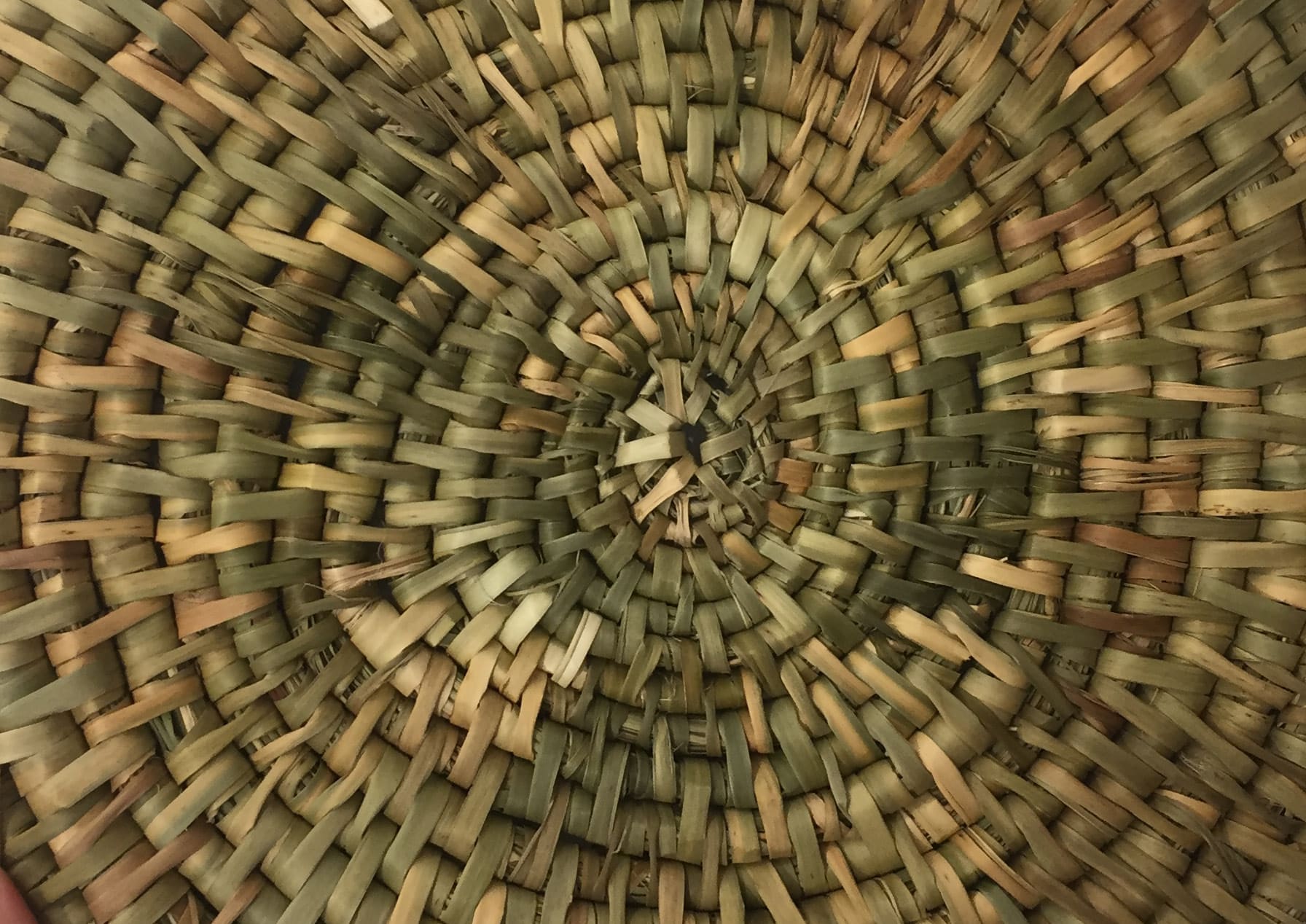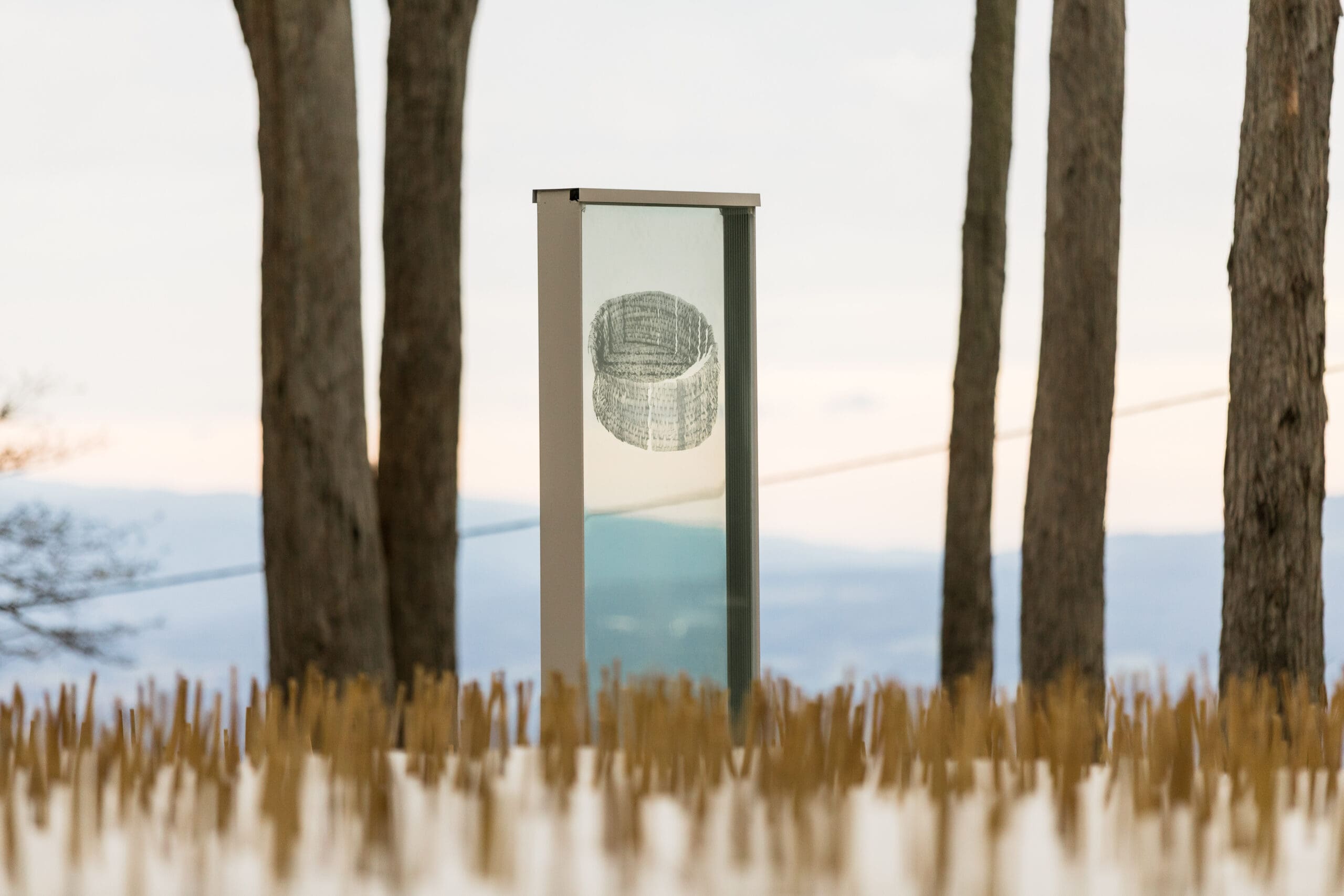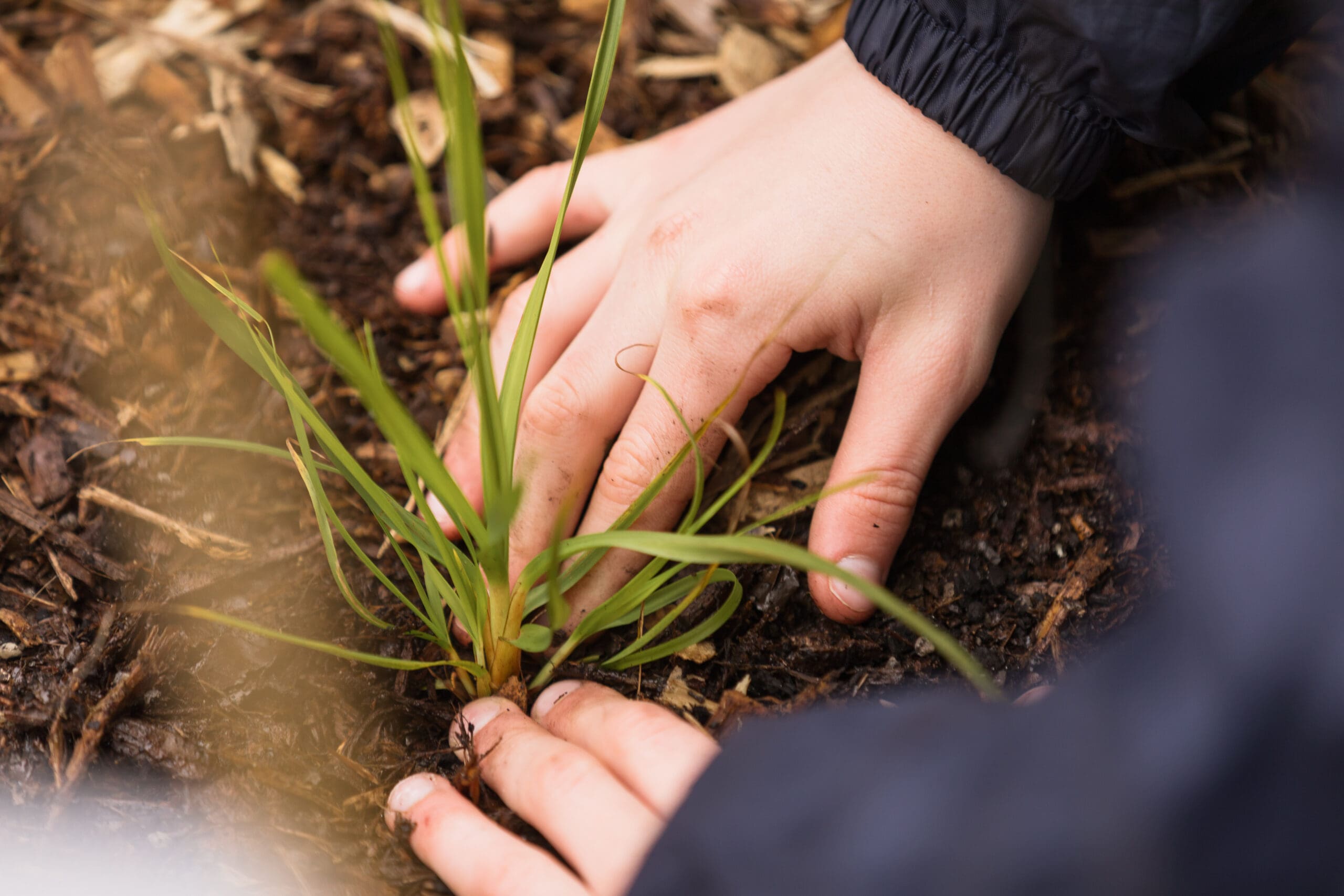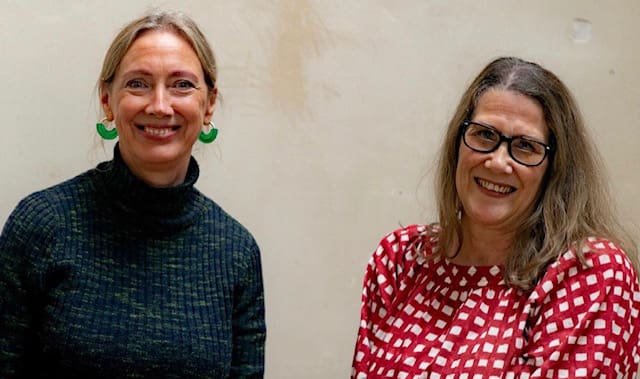Djirra Binak
'Djirra Binak' rises in a culturally significant site in Kalorama


Aunty Kim Wandin and Chris Joy (Murrup Biik)
in collaboration with Collide Public Art
Djirra Binak (Reed Basket), 2024
glass, steel, aluminium, Indigenous plants
(Lomandra longifolia, Dianella, Wallaby grass)
Embedded on Wurundjeri Woiwurrung Country in goranwarrabil (the Dandenong Ranges), Djirra Binak (Reed Basket) is a dynamic sculptural installation by Murrup Biik—a public art practice led by Aunty Kim Wandin and Chris Joy—in collaboration with Collide Public Art Initiative.
Incorporating glass, light and living plants, Djirra Binak is a profound expression of cultural knowledge, Ancestral memory, and contemporary innovation. At the heart of the installation is a highly detailed photographic render of one of Aunty Kim’s woven baskets. Etched in white across several layers of glass, its intricate, three-dimensional form hovers above a generous planting of Lomandra longifolia, Dianella and Wallaby grass (Rytidosperma spp), traditional fibre plants employed in Aboriginal weaving practices.
Drawing on thousands of years of Wurundjeri Woiwurrung knowledge, fibre-based practices such as this are a celebration of resilience, matrilineal wisdom, and embodied connection to Country. For Aunty Kim, weaving provides a means of honouring the strength and legacy of her Ancestors, such as her great grandmother, Jemima Burns Wandin Dunolly, who actively resisted colonisation by working to protect and preserve culture and language at Coranderrk Aboriginal Station:
Women have been our unsung heroes. The basket is symbolic of women being the vessels that carry life. Women have always innately given of themselves to family and their communities, and for myself I make reference to my Coranderrk family.
In this light, Djirra Binak represents more than just a physical object—it is a vessel of knowledge, activism, and spiritual connection and a powerful metaphor for continuity, care, and carrying tradition into the future.
The installation not only preserves heritage, as Chris Joy observes, it transforms it into a contemporary expression and enactment of Wurundjeri Woiwurrung knowledge:
A pile of unused glass plates on the studio floor gave me the idea to create a three-dimensional hologram of Aunty Kim’s basket, and therefore a way to honour her weaving practice, matrilineal cultural traditions, and women’s custodianship of lands and waters. The planting scheme represents, not only a reciprocal relationship with Country (we give back through our work), but a continuance of cultural tradition, by providing an opportunity for weavers to harvest here for their own practices.
To experience Djirra Binak, visitors traverse a path that weaves through beds of culturally significant plants—an invitation to be immersed in place and develop a relationship with Country. Upon reaching the central sculptural element and beholding the glass panels front on, the fragmented elements of the image are aligned, and the basket can be perceived in its entirety. In this way, visitors become active participants in realising the work and, with that, a shared sense of custodianship and care for Country is instilled.








About the creative team
Murrup Biik
Murrup Biik is a collaborative public art practice led by Aunty Kim Wandin and Chris Joy, grounded in a deep relationship with Country and committed to creating culturally rich, site-responsive works that honour Aboriginal knowledge, ceremony, and community connection.
Aunty Kim Wandin
Aunty Kim Wandin is a Wurundjeri Elder of the Woiwurrung language group. She has lived and worked on Country in Healesville, Victoria, her entire life. Her traditional basket making has been handed down to her by direct lineage: from her Grandmother, her Great Grandmother and the Ancestors. Aunty Kim’s work represents a significant cultural position within the South East of Victoria as part of an important group of arts practitioners. Her work adheres to and references traditional cultural practices.
I am a Wurundjeri Woiwurrung woman. My traditional family name is ‘Wandoon’ which means ‘spirit of the water.’ My family and I still live ‘On Country’.
The art of using reeds to make eel traps and baskets is a tradition handed down to me by my Nanna Ollie, who was taught by Granny Jemima (at Coranderrk). I am intending to pass this on to my own granddaughter.
I collect my reeds on my Country and hang them to dry in the sun. When they are dried, I soak them in water to make them flexible and ready to use. My work contains the spirit of my Ancestors, reflecting their strength and resilience.
Chris Joy
Chris Joy utilises photography, clay and paint, predominantly observed from structures, forms and textures in nature, in her own artistic practice, and to inspire her public art designs with Kim Wandin. She is intrigued by the human-nature relationship, her explorations including archetype and myth, etymology and poetry, and the role of the senses, play and memory in immersive and emotional experience. Her overriding preoccupation is with giving the voiceless a voice.
Chris has worked in artistic collaborations, including public art, garden design, play-scapes, projection, project management and curation. She has worked for many years in the cultural and environmental sectors, designing places and curating experience in public space. She is passionate about challenging biases and myths about women’s art where women’s art is under-valued, categorised, and under-or not acknowledged.
Chris lived in Andalucia, Spain, for three years and through her painting, explored women’s position within domestic and communal landscapes.
Collide
Founded in 2018 by Director James Voller, Collide Public Art Initiative is an artist-led studio dedicated to creating innovative, site-responsive public artworks across Australia. Collide specialise in translating artistic concepts into large-scale installations that merge digital media, architecture, and material experimentation.
